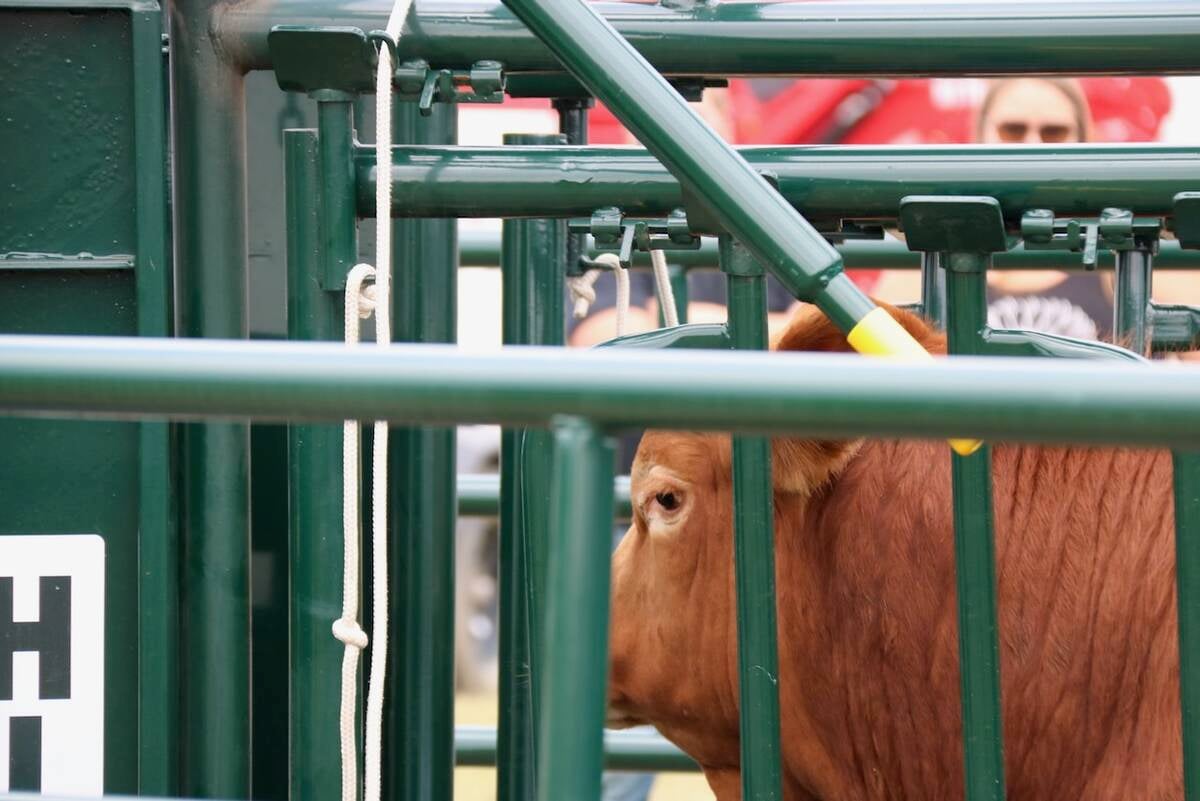The calf crop percentage is often used as an overall measure of cow-calf herd productivity and is calculated by the number of calves weaned divided by the number of cows exposed to breeding.
The goal is to have a calf-crop percentage of at least 85 percent.
Ultimately, we would like a high percentage of our cows to get pregnant and maintain their pregnancy, but we also want to have those pregnancies achieved early in the breeding season.
Having calves born earlier in the breeding season means that they will be heavier at weaning, resulting in more pounds of calf to sell per cow.
Read Also

Good handling equipment a must on cattle operations
It’s important for the safety of producers and everyone else dealing with their stock that handling equipment is functional and safe.
Cows in good body condition and with good trace mineral status are more likely to cycle early, conceive and maintain their pregnancy.
In addition, several scientific studies have begun to show a relationship between the cow’s temperament and her reproductive performance.
Cattle temperament is defined by how cattle react when exposed to human handling. Cattle that are more docile will be less stressed and have lower levels of the stress hormone known as blood cortisol.
Obviously, temperament can be affected by many factors, such as genetics and issues such as poor handling facilities and inappropriate handling techniques.
Many producers will often comment on the cow that is difficult to handle or flighty being the same as her mother was, which would suggest a significant genetic component.
Cattle temperament has been studied in a variety of settings. Excitable feedlot cattle have shown to have lower average daily gain, lower dry matter intake and poorer feed efficiency. Even carcass quality can be affected with decreased marbling, decreased meat tenderness and increased dark cutters and carcass bruising in excitable cattle.
In a study published in the journal Reproduction in Domestic Animals, Dr. Ramanathan Kasimanickam and co-authors evaluated the effect of temperament on the reproductive performance in beef cows.
One way to score temperament is on a five point scale as cattle exit a chute. Cattle that exit the chute jumping or running toward herd mates will get a high score, while calm cattle that exit the chute at a walk will get a low score.
In some studies, they will also measure the chute exit speed velocity to assess the animal’s temperament.
In this particular study, two experiments were described in which about 1,500 Angus or Angus-cross beef cows in each study were evaluated.
All cows were given body condition scores and were scored for temperament in the handling facility two to four weeks before the breeding season.
The breeding season in both experiments was for 85 days and the bull:cow ratio was in the range of 1:25 to 1:30. All of the bulls used had passed a breeding soundness exam and tested negative for venereal diseases.
Pregnancy testing was carried out at two and six months after the beginning of the breeding season so researchers could determine the percentage of cows that lost pregnancies, as well as the proportion of pregnant cows.
The temperament scores were used to categorize the cows into two groups in each study (excitable and calm).
In Experiment 1, 58 percent of the cows were classified as calm. In Experiment 2, 53 percent of the cows were classified as calm.
Researchers found that in both experiments the cows that were classified as calm had higher pregnancy rates.
In Experiment 1, calm cows had a 94 percent pregnancy rate versus a pregnancy rate of 88.6 percent in excitable cows.
In Experiment 2, the pregnancy rate for calm cows was 91.5 percent while the excitable cows had an 82.2 percent pregnancy rate.
In both studies, the researchers were also able to demonstrate that calm cows became pregnant earlier in the breeding season and in Experiment 2 the calm cows also had significantly lower rates of pregnancy loss.
The researchers suggested that the elevated stress hormone called cortisol in excitable cows could affect their reproductive hormones, resulting in a prolonged period before they begin cycling after calving.
It may also affect the ovarian follicle and suppress some estrus behaviour. Because of its impact on hormones, it could also result in some cases of early embryonic death and fetal loss.
This study is one of many that has demonstrated an association between temperament and performance.
It reinforces the fact that we need to use low stress cattle handling techniques at all times in our operations and make sure that our handling facilities are well designed to manage cattle.
It also would suggest that it makes sense to cull excitable cows whenever possible. When selecting replacement heifers, we should keep temperament in mind as an important selection criteria.
These excitable heifers and cows are often more difficult to manage and their temperament may also have an impact on their future reproductive performance.














